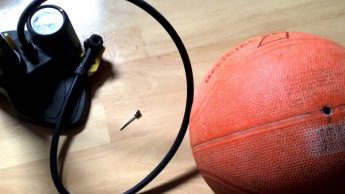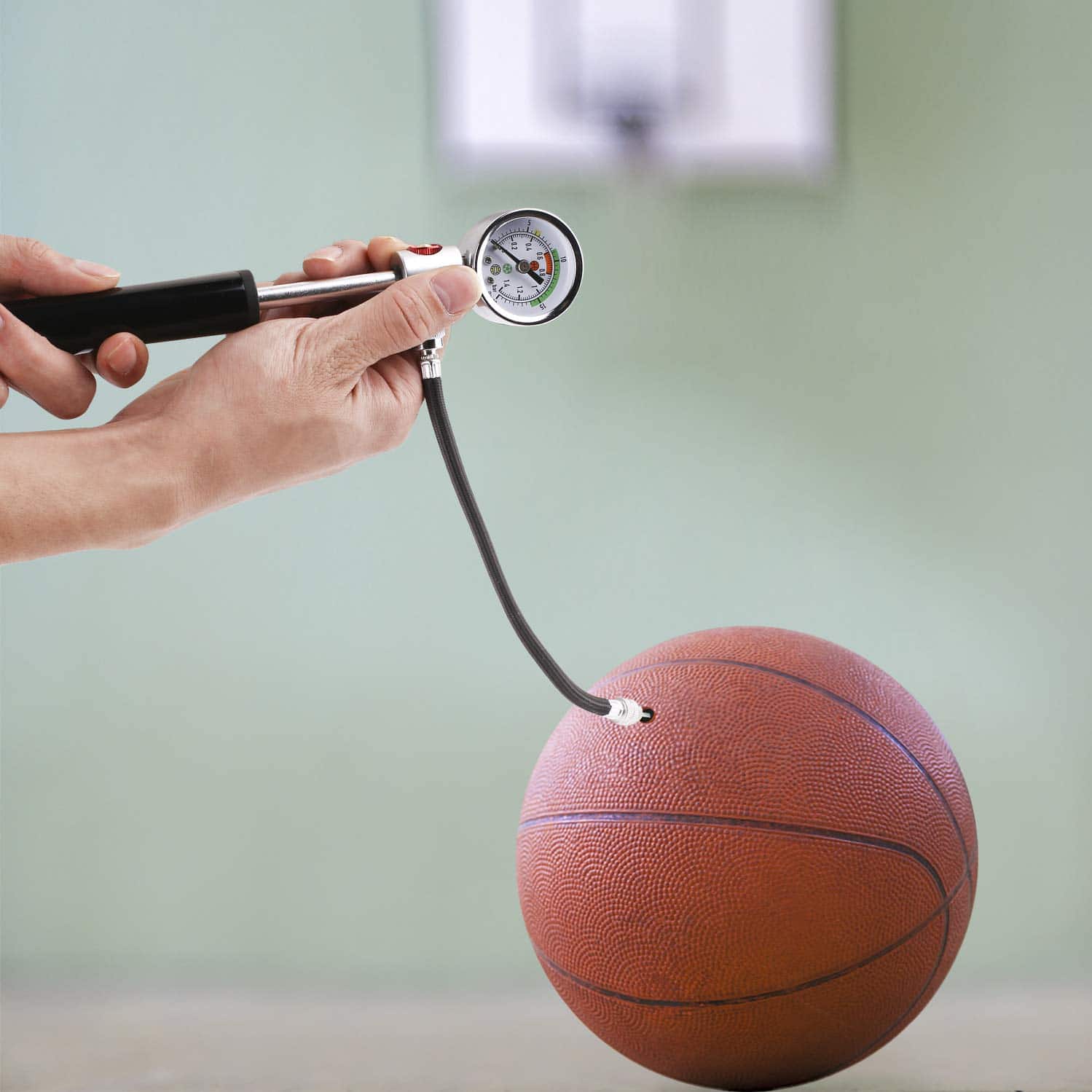Basketball game remains one of the world’s most played and enjoyed game, but it becomes so boring playing with a flat ball. Nevertheless, playing with a ball that has so much air in it leaves you with too much bounce, hindering you from effectively displaying all the skills you’ve got.
Therefore, it’s necessary you pump it up with an inflator probably with an available bike pump, hopefully, one with a gauge.
Unlike newly bought bicycle tyres, you don’t really need to always inflate your basketball. A brand new basketball comes full inflated but this doesn’t mean you won’t be inflating it as they also run flat.
Sometimes, you might pick up your ball to play only to discover that it is less of air than normal. This loss of so much air could have arisen during the night causing your ball to bounce less than normal and not as high as you expected it.
Over the years, before the man got so awakened, some tag this deflation of basketball, ‘strange’. Picking up a ball you used the previous day only to find it less in weight, bounce, placing hitches on your stunts, skills and showoffs, leaving you surprised if this is your first time experiencing it.
This natural occurrence and phenomenon are usually caused by quite a few factors. Factors which are hugely related to exposure to cold.
Cold temperatures have remained a major bug that drains pressure out of a fully inflated ‘good’ basketball.
Good basketballs in this context, I’m referring to balls without leakages.
Different basketball manufacturers make different kinds of balls, varying in the specifications. Different sizes, designs and materials as some basketballs are synthetic while some are made of pure leather.
Nevertheless, a basketball dropped on the floor is expected to bounce back at least two-thirds of the distance it was dropped.
This ‘bounce back’ procedure after the drop is only acquired when the ball is with its required air pressure.
After the manufacture of every basketball, they are ideally tested using this ‘bounce back’ procedure to determine the standard air pressure for the ball. This air pressure is printed on the body of the ball, in case the user decides to inflate his deflated ball.
An average basketball has a standard pressure of 7-9 PSI. As I said earlier, you should not exceed this limit or reduce the Ball’s required pressure, so as to get the perfect game satisfaction you desire in the courtyard.
Knowing when your basketball has reached its standard PSI is easy, as most air pumps come with a pressure gauge.
However, if your air pump is without a gauge, you can check your basketball’s air pressure using the ‘bounce back’ procedure. Your basketball is expected to bounce back at least 2/3 of the distance it was dropped from. This entails that the balls should at least bounce back to your waist level after the drop.
Can you pump up your basketball with a bike pump?
Quick Navigation
It is an indisputable fact that basketballs have their default pumps, specifically designed for its use.
But when this pump is not available, there is always an alternative.
All over the internet, there are a lot of videos offering DIY hacks on how to easily pump your basketball, with or without a pump.
Some of these methods may or may not be effective, some could be posing a threat to your ball upon its trial, but in all, it is very necessary you use the proper equipment to inflate your basketball to correct pressure.
You can pump up your basketball using a bike pump, as the same tools can be used for the same function; inflation of air vessels.
I believe your thoughts at this point could be, ‘If all pumps are used for the same function, then I can pump any inflatable material using any pump’?
Every inflatable material has a unique valve for air passage. Balls are manufactured with different specific valves, same as bike tyres. Spreading down to balloons, pool floats and toys, every material has its specific valve, same as their pressure rating are specified to each of them.
The pressure in a ball pump is far less than that in a bike pump. Given this slope in pressure, it might be difficult for you to fill up your bicycle tyres to a reasonable PSI with just a ball pump in anticipation for a good ride.
However, you can fill up your balls easily using your bike pump as much pressure is delivered from a bike pump more than it is from a ball pump, considering their custom build.
This naturally should tell you that it is faster to pump your ball with a bike pump than you will do with a ball pump.
The maximum pressure rating for bike pumps run in the ranges of 90-120 PSI while ball pumps are designed to function and hold pressures of 10-20 PSI.
Notwithstanding, despite the fact that using a bike pump for you ball can be way faster, there are factors you will have to consider before using them.
These factors are of huge intent and very important you consider them because balls and bike tyres do not come with the same valves.
Your bike pump won’t be able to fit in directly into your basketball if due processes are not followed.
Having known this, you can achieve your desire to pump your ball by using a needle. These specific needles used in pumping balls are known as ball needles. All you will need to do is to insert the needle into your bike pump.
Moisten the needle a bit with water, then insert it into the hoke on your basketball. Begin pumping!
With the gauge on your pump, you will be able to detect when the ball has reached its pressure limit to avoid exceeding that limit.
Pull out your bike pump with its needle once you have reached the PSI printed on your ball.cYou are now free to head out to the courtyard and showcase your basketball stunts.
By now I’m pretty sure you believe that you can pump your basketball with a bike pump. Need answers to any questions that bother you? Feel free to reach us in the comments.


